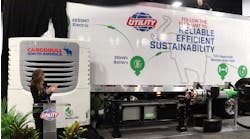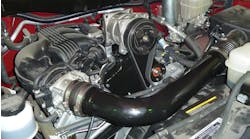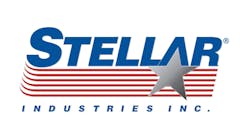No driver, commercial or otherwise, wants the experience of a tire freeing itself from their vehicle and bouncing down the highway. While not many well-known agencies track wheel-off events today, a 1992 study from the National Transportation Safety Board estimated that there were about 750 to 1,050 wheel-separation crashes for medium/heavy trucks in one year, and more recently, MEA Forensics estimated that there are about 50,000 wheel-off events in North America annually.
To avoid such incidents, the Arkansas-based Maverick Transportation, which has about 2,400 flatbed trailers and specialty units, has turned to technology such as SKF’s TraX wheel end monitoring (WEM) system with Road Ready advanced trailer telematics.
“Wheel separation is a catastrophic failure that sends a wheel assembly rolling down a highway—and it’s incredibly dangerous,” said Mike Jeffress, vice president of Maintenance, Maverick Transportation. “With Road Ready and TraX, we caught this failing wheel bearing way ahead of true failure—and that’s a significant cost savings.”
According to SKF, a bearing and seal manufacturer, the TraX WEM monitors wheel bearing vibrations to detect damage caused by raceway spalling, which is when a bearing begins to pit or flake. Cengiz Shevket, president of Vehicle Aftermarket Sales, North America at SKF, told Trailer/Body Builders at Heavy Duty Aftermarket Week that this kind of damage can occur if a wheel bearing hasn’t been properly lubricated or has been poorly set.
Read more: SKF strengthens manufacturing footprint in North America
Installed at the outboard side of the truck wheel, the TraX sensor can set a threshold for normal bearing vibration frequencies, and then provide a visual alert via LED lights if the bearing deviates from this threshold. The lights can display certain sequences for different wheel-bearing failures and sensor statuses, such as if the sensor’s battery is running low or if it detects a wheel-end temperature anomaly.
Additionally, the sensor’s vibration sensitivity can also be altered depending on a fleet’s environment and application, such as on well-paved highways for long-haul vehicles versus potentially rougher roads for waste applications.
More recently, Shevket explained that SKF has incorporated machine learning to help sensors establish a fleet’s baseline vibrations, and then adjust this baseline as the fleet travels.
“What we have really built in is new algorithms and connectivity,” he said. “The principle of wheel-end monitoring was with SKF for a long time, but it had limited usage and limited applications. But today, with the new algorithms, the sensor can be used in steer axles, drive axles, trailer axles, driven or non-driven, making its applications much, much broader.”
The TraX WEM is retrofittable, too, Shevket noted and is easily affixed via wheel lugnuts. Maverick Transportation also reported that activating the sensors was as simple as attaching them in the first place.
“[It was] Seamless. Easiest telematic install to date,” said Kyle Mitchell, regional service manager, Maverick Transportation. “We used the app to pair the WEM with the trailer number and specific wheel-end location, mount, and then activated it with a magnet.”
Maverick Transportation stated in a press release that it uses TraX and Road Ready trailer telematics on 900 of their trailers and aims to expand their use to the entire fleet by the end of this year.









